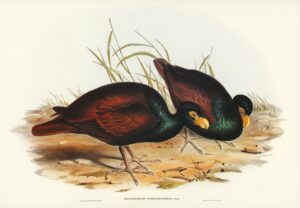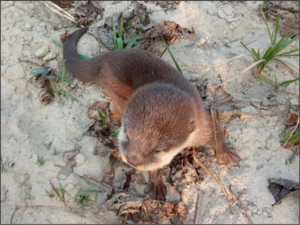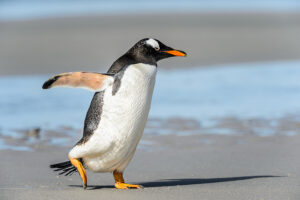Last week, the biggest Loch Ness Monster hunt in over half a century took place. Hundreds of volunteers joined forces to search for the elusive — most would say illusory — Scottish creature.
“We are guardians of this unique story…committed to helping continue the search and unveil the mysteries that lie underneath the waters of the famous Loch,” said Paul Nixon, manager of the Loch Ness Centre. Nixon presumably does not subscribe, at least publicly, to Nessie’s illusory status.
The legend has persisted for centuries. The story tells of St. Columba, an Irish monk, who was staying with the Picts near the mouth of the River Ness, near what is now Inverness. He heard tales of a local man being pulled under the water by a colossal beast. Columba asked a follower (perhaps unkindly) to swim across the river, and the man was duly attacked by the monster. When he saw this, Columba made the sign of the cross and banished the monster to Loch Ness, where it has been ever since.

The most famous photo of the Loch Ness Monster.
The Surgeon’s Photograph
Nessie first caught the attention of the masses in 1933. On May 2, 1933, the Inverness Courier published the story of a local couple who claim to have seen “an enormous animal rolling and plunging on the surface.”
Later that year, the first photo of Nessie appeared. This was swiftly followed by the infamous “Surgeon’s Photograph” of the Loch Ness monster poking its head above the water. Thereafter, the story went viral, in the fashion of the time. Desperate to catch a glimpse of the so-called monster, London newspapers began sending journalists to Scotland. A circus offered $25,000 to anyone who could capture Nessie. People from all over poured into the region. Unsurprisingly, there were numerous sightings.
Last week’s search drew 300 volunteers from around the globe. Of those, 100 collected data using newer surveying techniques, including thermal imaging drones and hydrophones. The remaining 200 watched live streams from several cameras stationed around the loch for clues, bringing this old search into modern times.
New search, but old, familiar outcomes: Over the two days, the organizers heard “four mysterious and previously unheard loud noises from the depths of the loch.” Sadly, their recording devices were not plugged in at the time.
“How many UFOs or Loch Ness Monsters would now be immortalized if the camera hadn’t been left in the car?” wrote cryptozoology debunker John Russell Napier back in 1972.

A sticker of Nessie on a window pane, modeled after the Surgeon’s Photograph. Photo: Shutterstock
Later, Nessie searchers saw a “giant shadow” just below the surface of the water. “I believe there is something big lurking in the depths of Loch Ness. I don’t know whether it’s a monster — I don’t know what it is, but I reckon there’s something down there” said Nixon after the search.
Nessie lives on
Still, the story of the monster hidden in the Loch has drawn hundreds of searchers and millions of visitors for decades. In 2018, scientists tested water samples from Loch Ness in search of DNA evidence. In 2020, even National Geographic teamed up with researchers, below, to simulate draining the loch. They were hoping to find something, anything to suggest that the legend was true.
The most recent flurry of interest came earlier this summer when some researchers suggested that Nessie might be a giant eel.
Even with all the failed searches, lack of evidence, and proof that the famous photo was a hoax, the legend lives on. The monster has become a beloved Scottish character that people want to exist. Books, films, and TV shows have all warmed to the famous creature, and factual evidence is almost redundant. The legend of Nessie lives on, even though the hunt, with or without modern tools, seems doomed to remain a failure.






